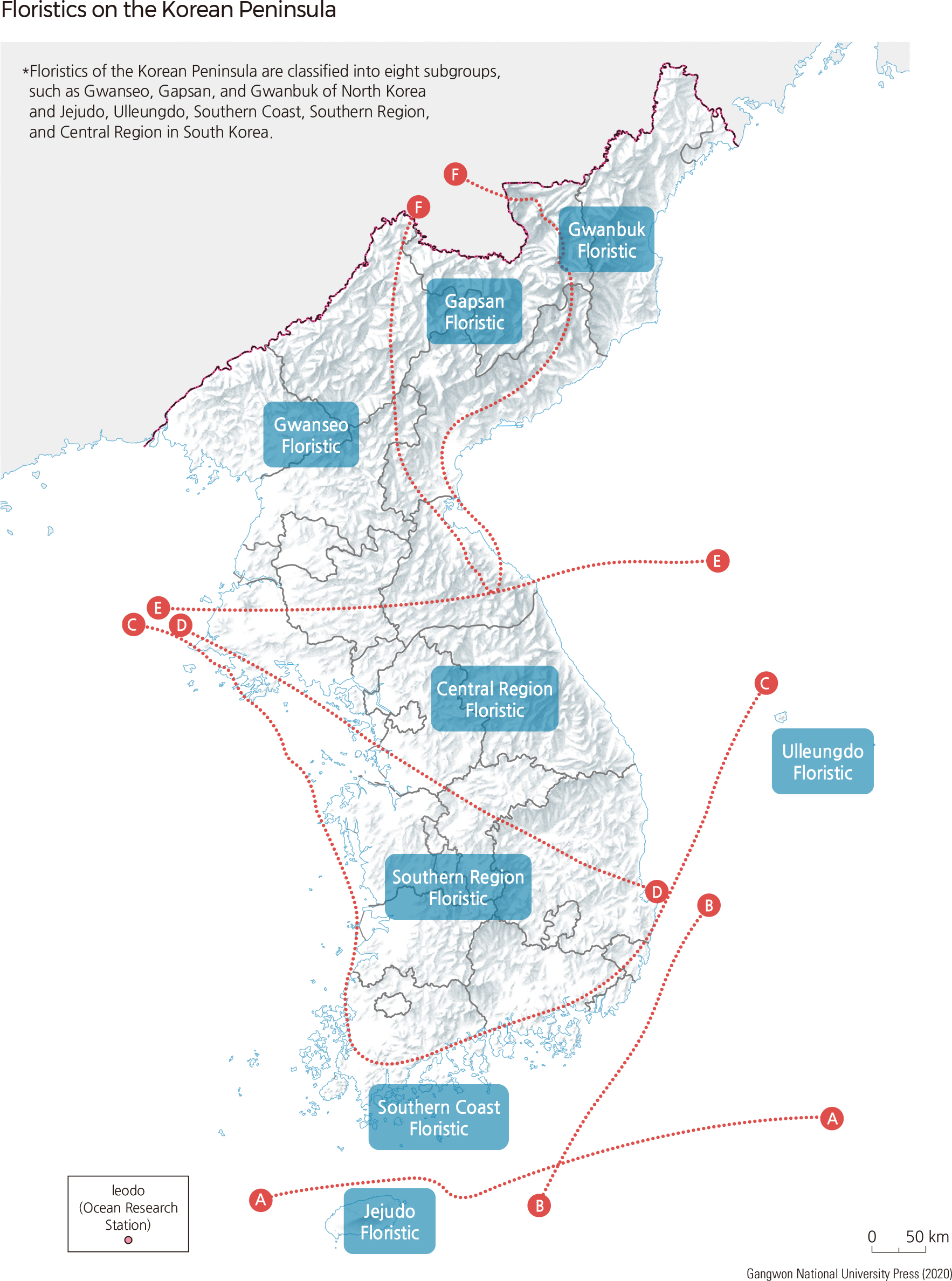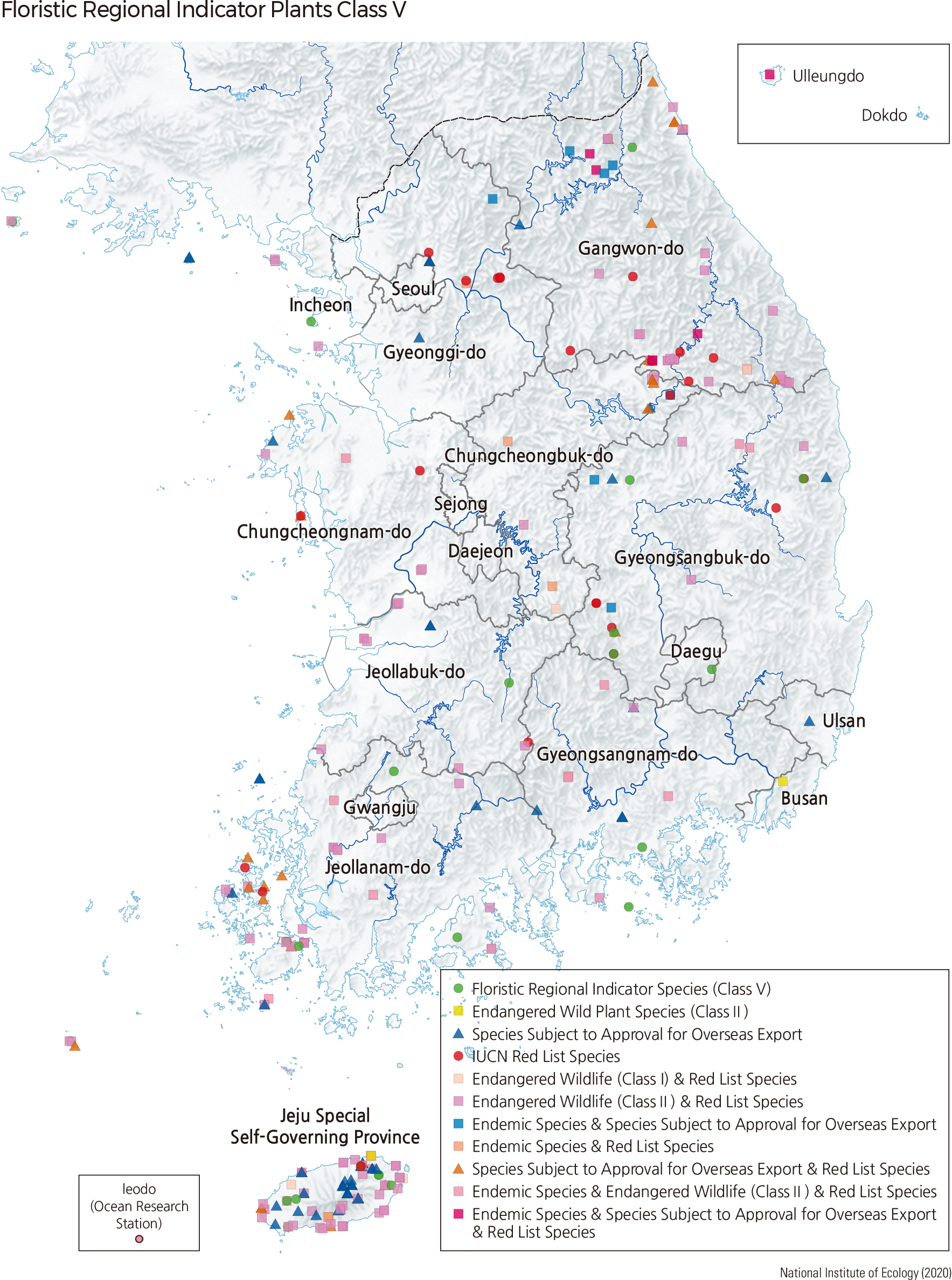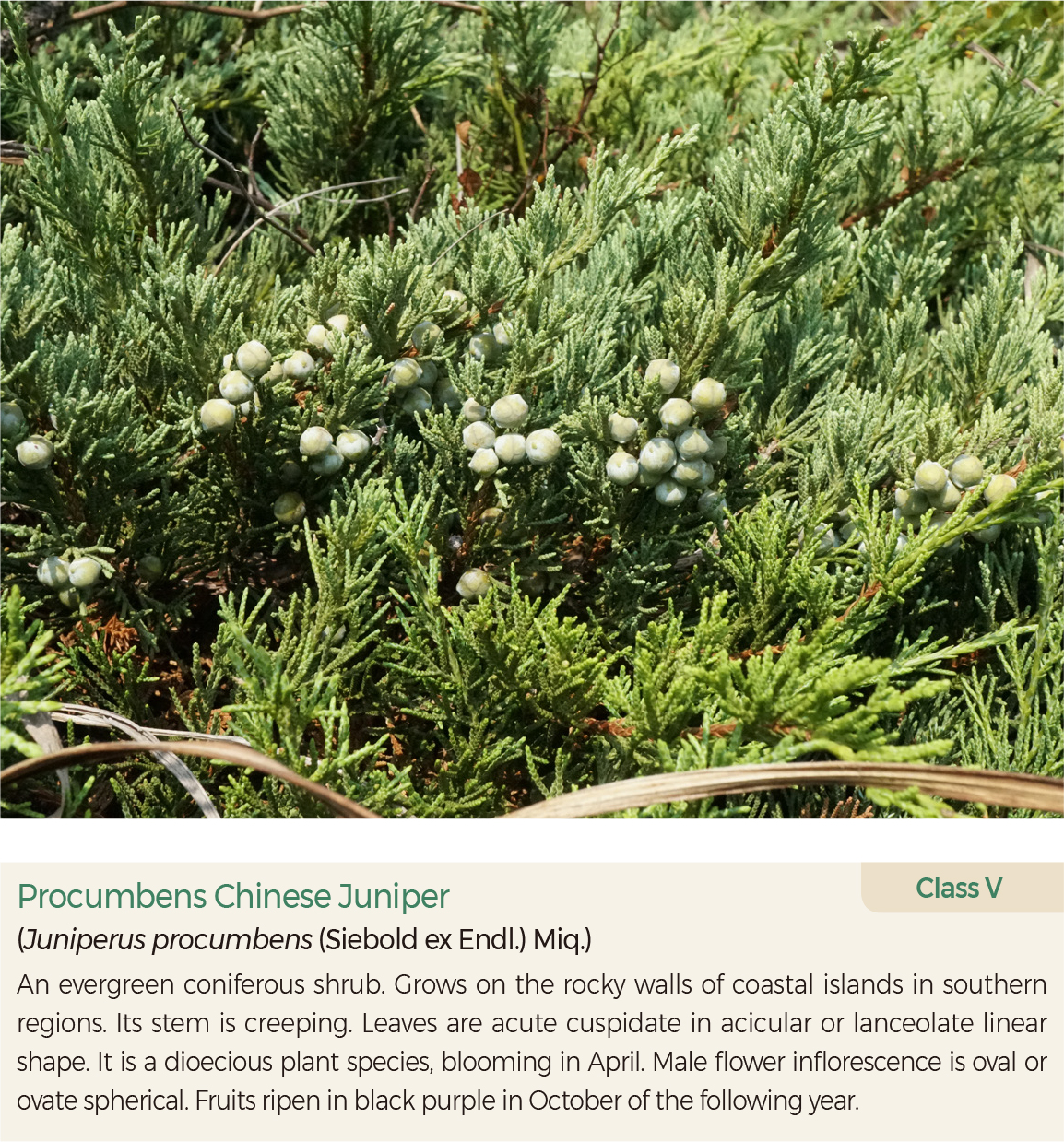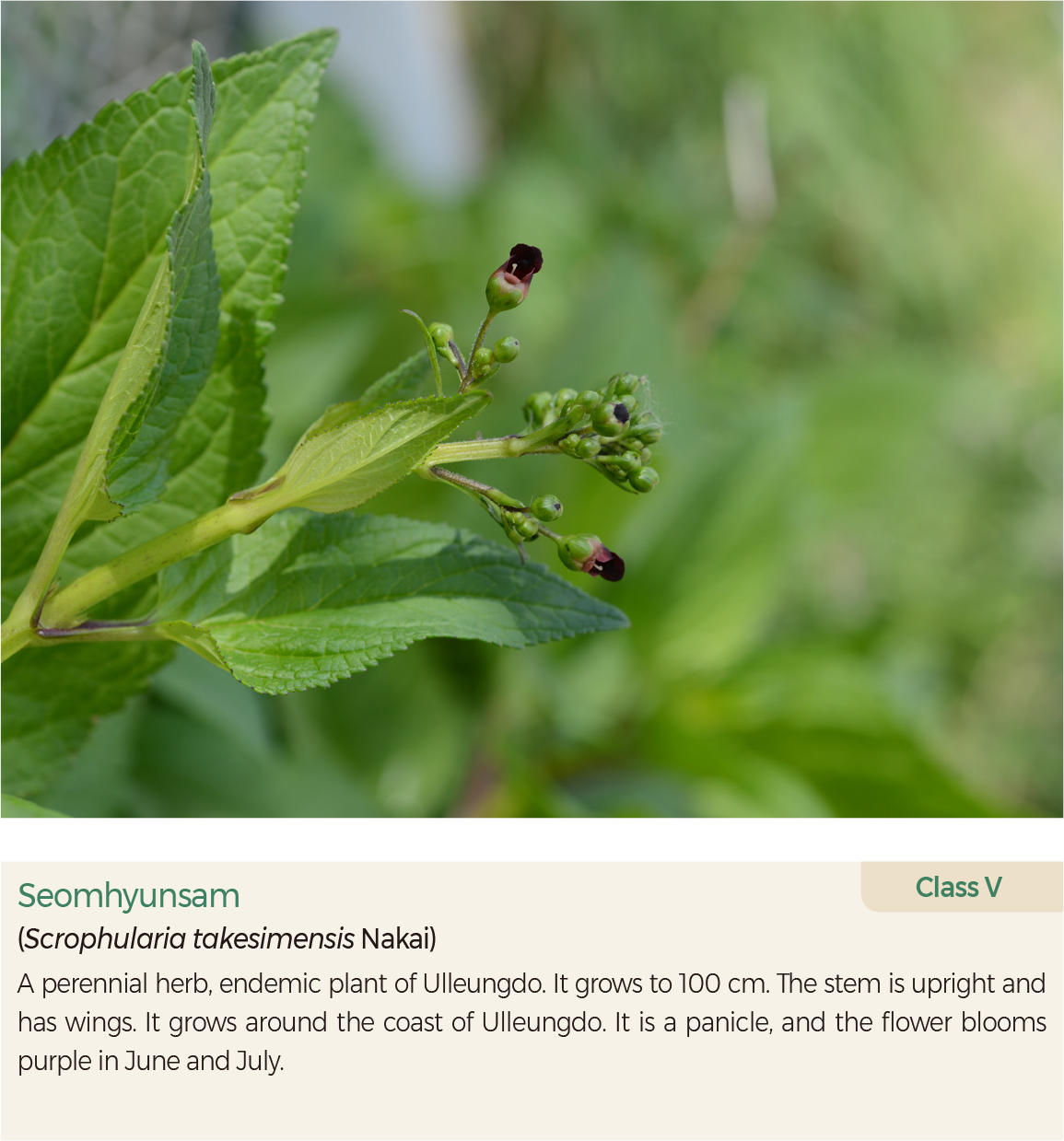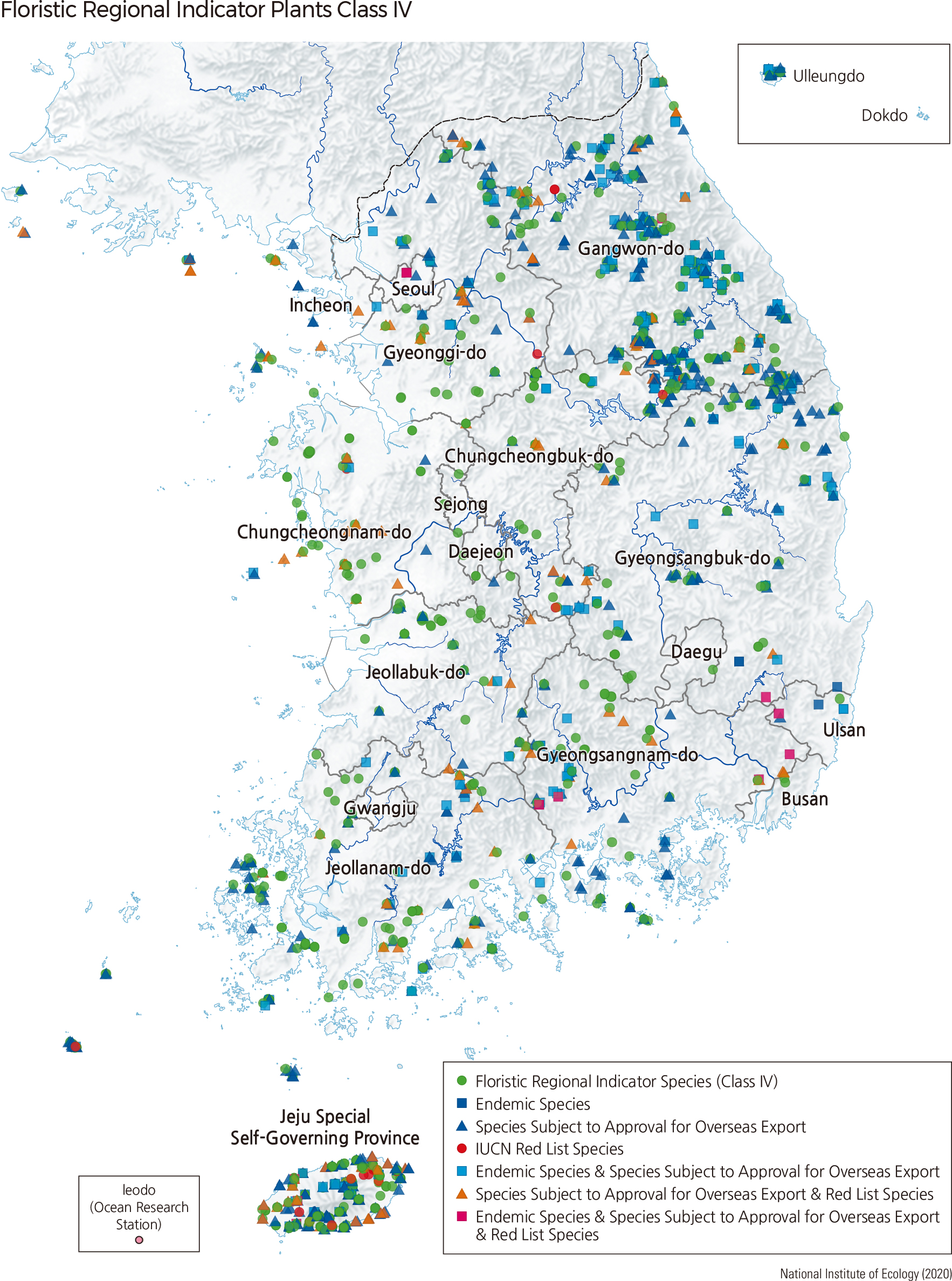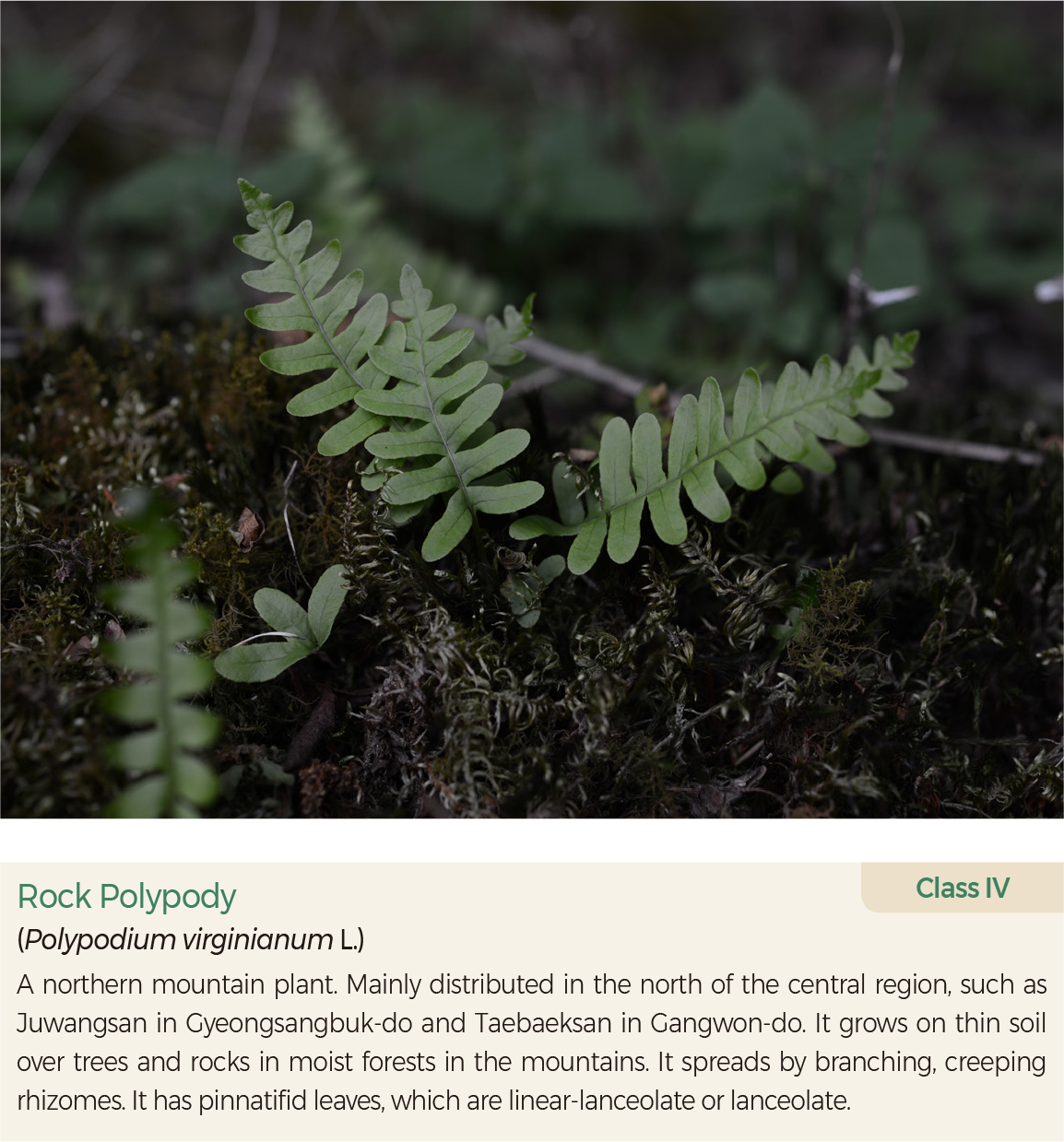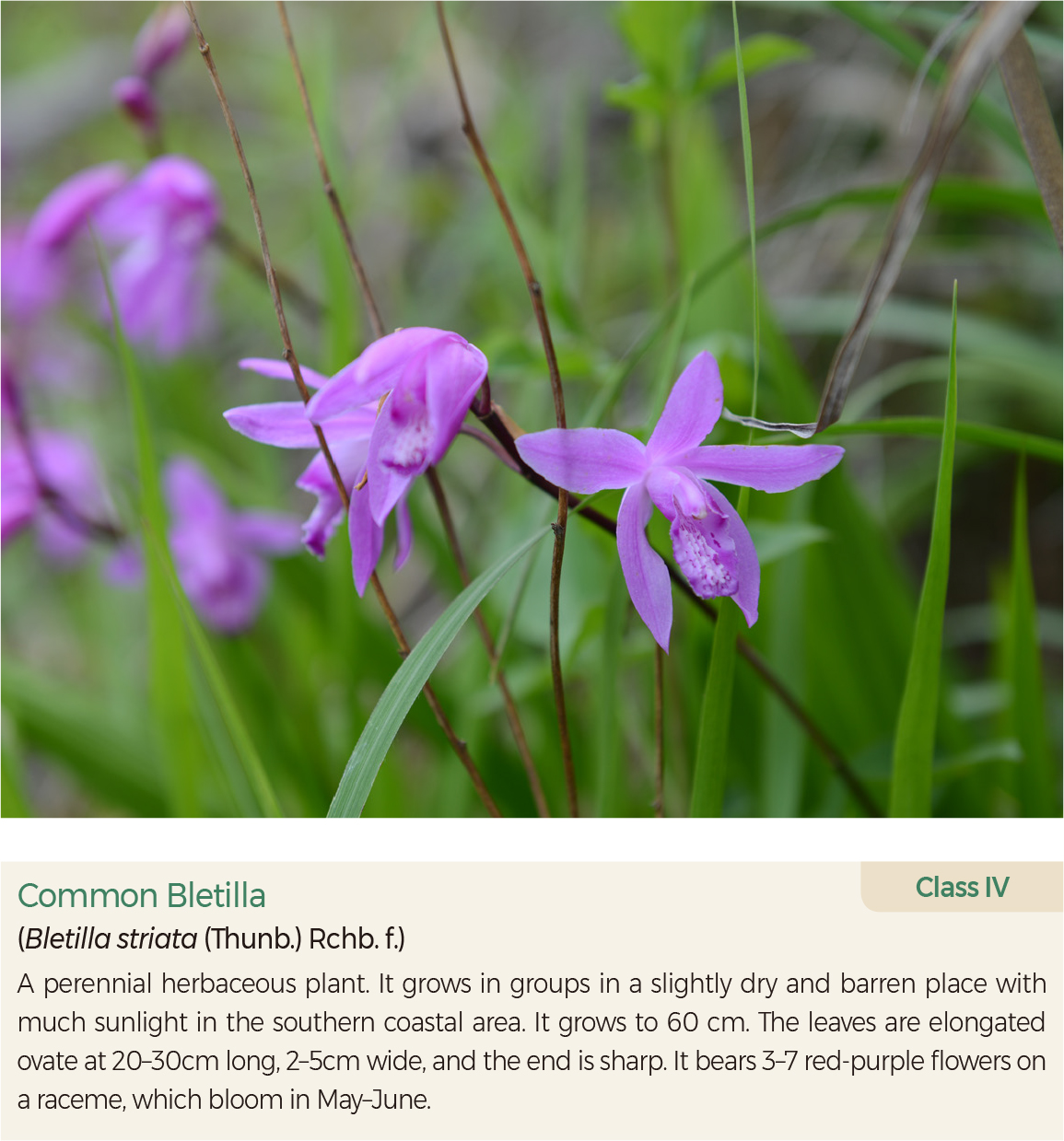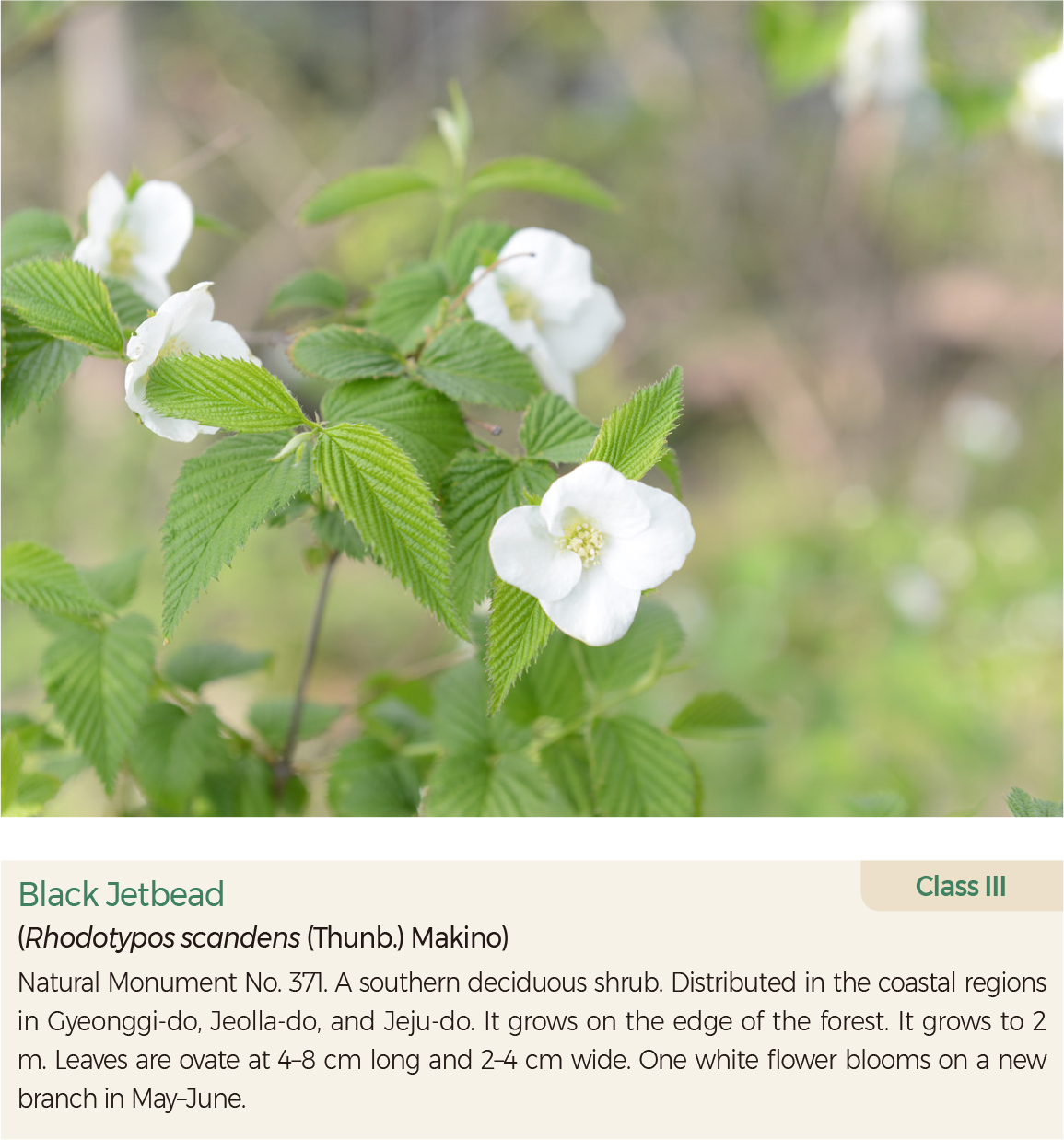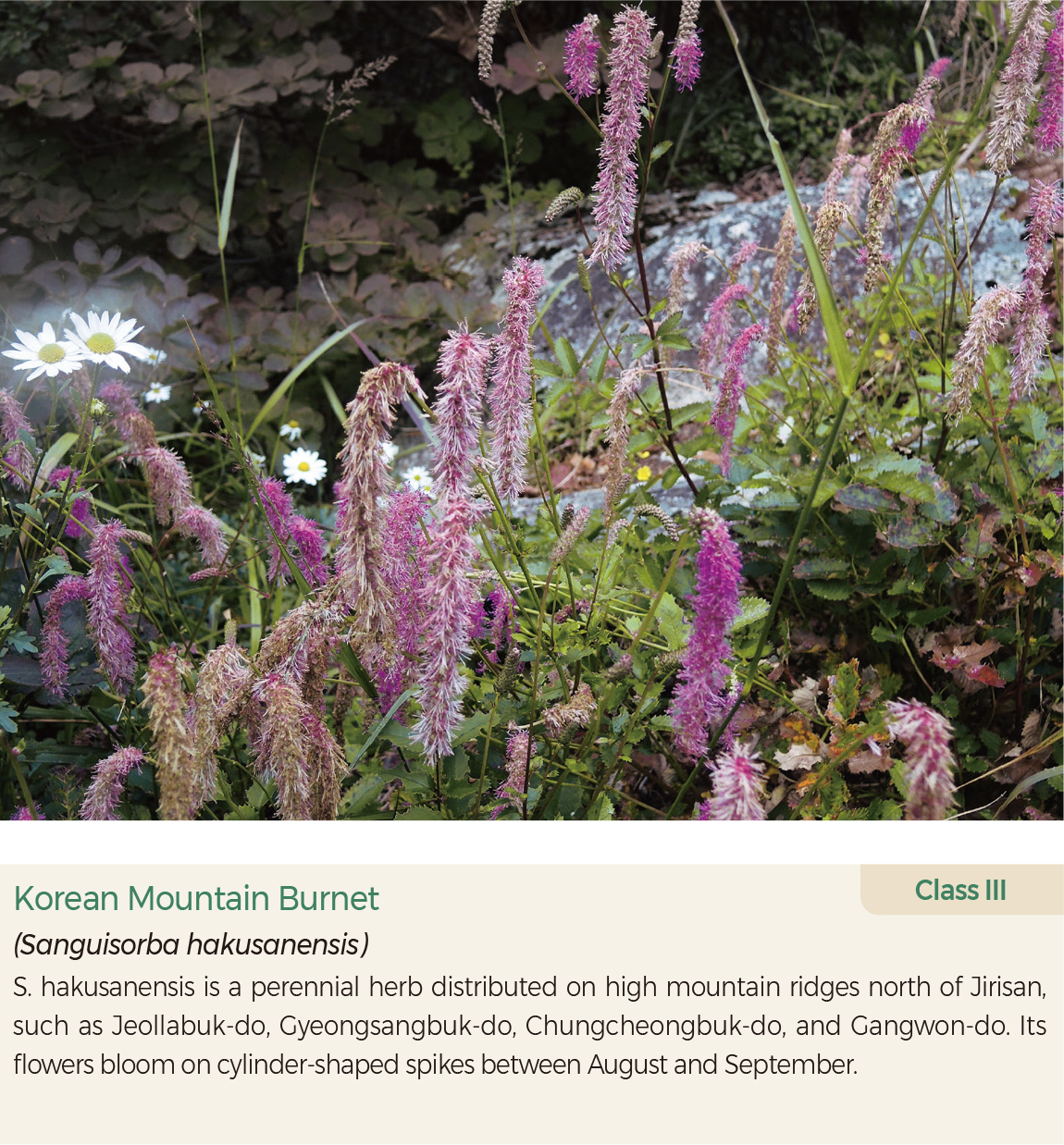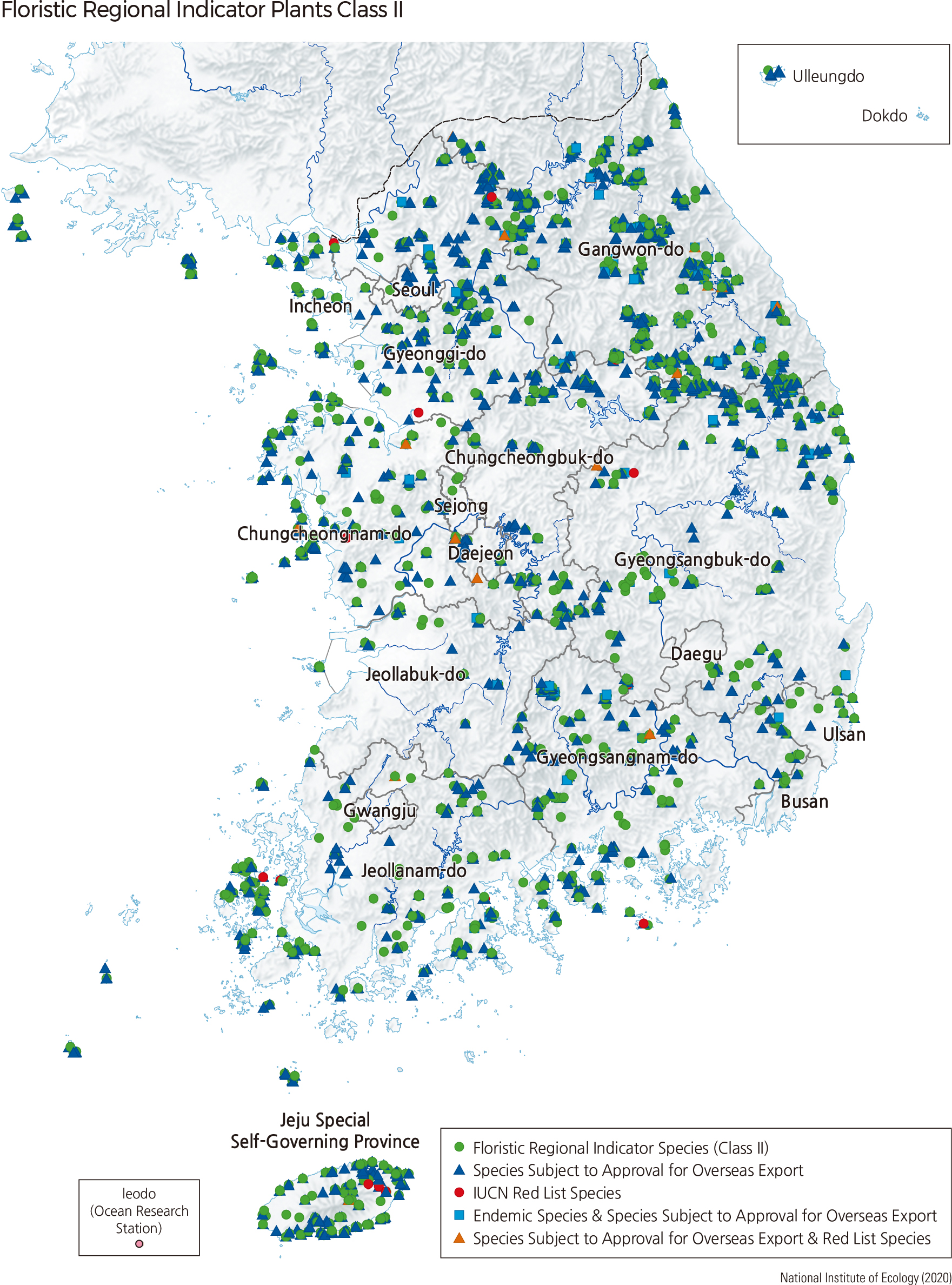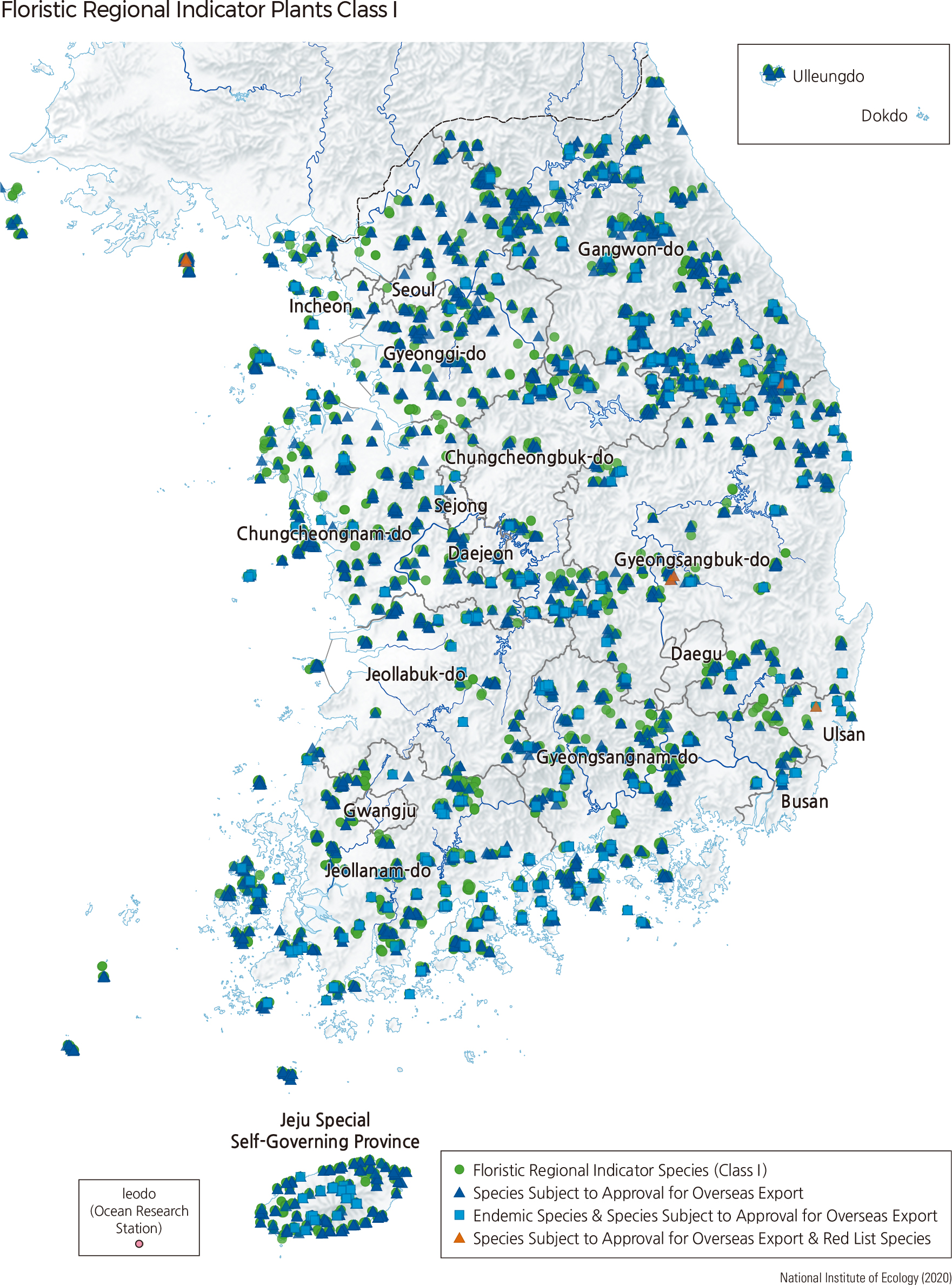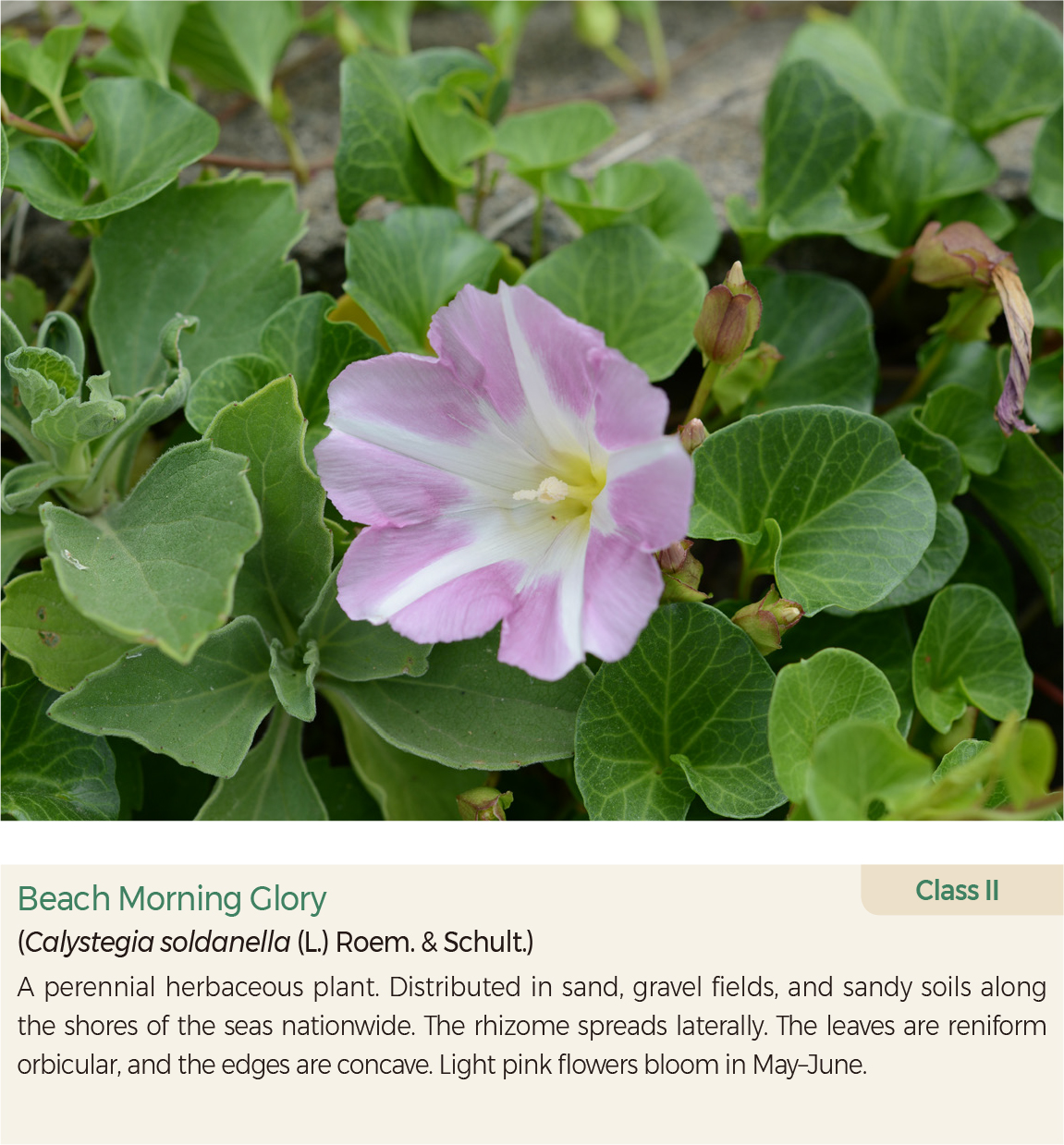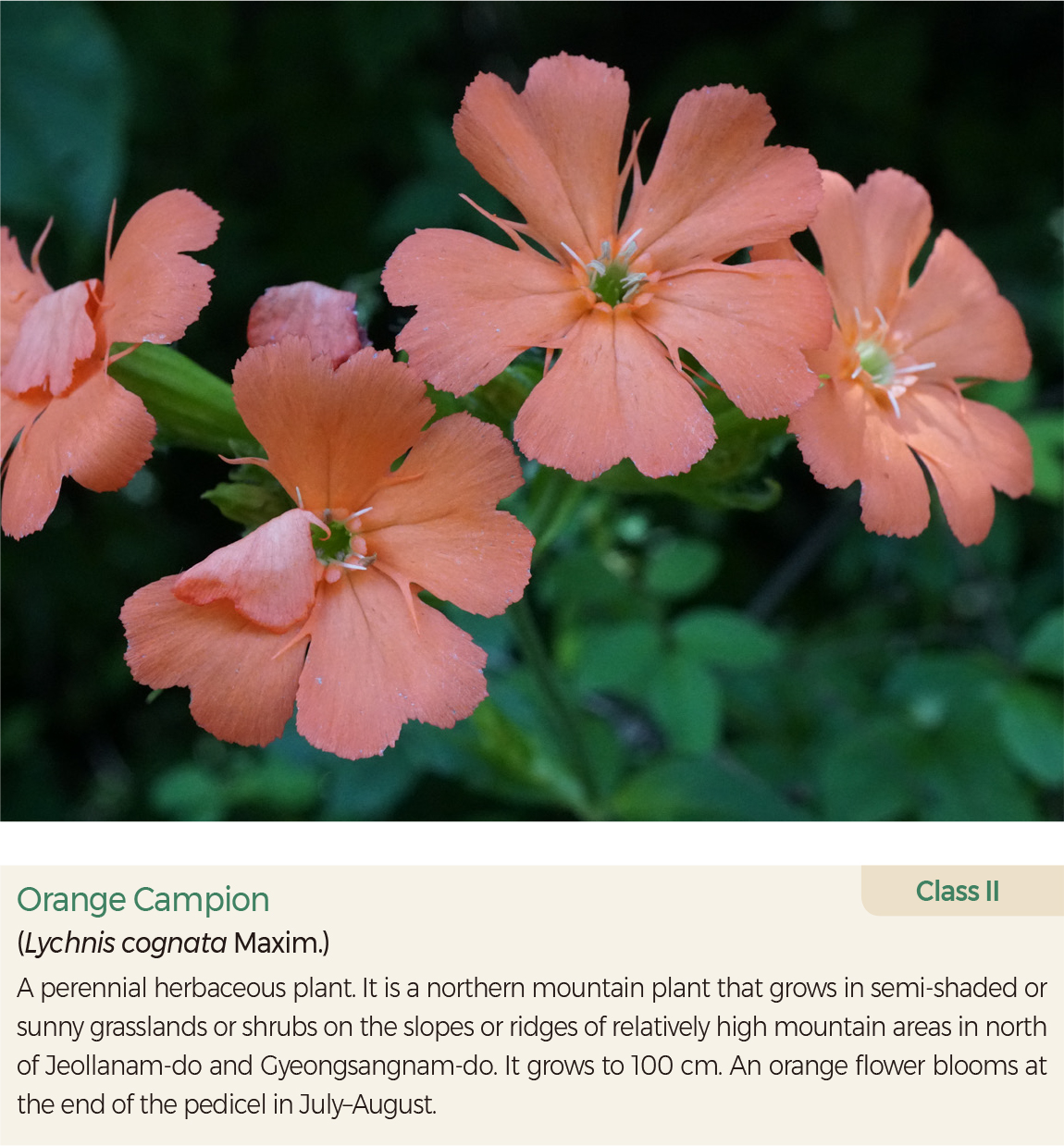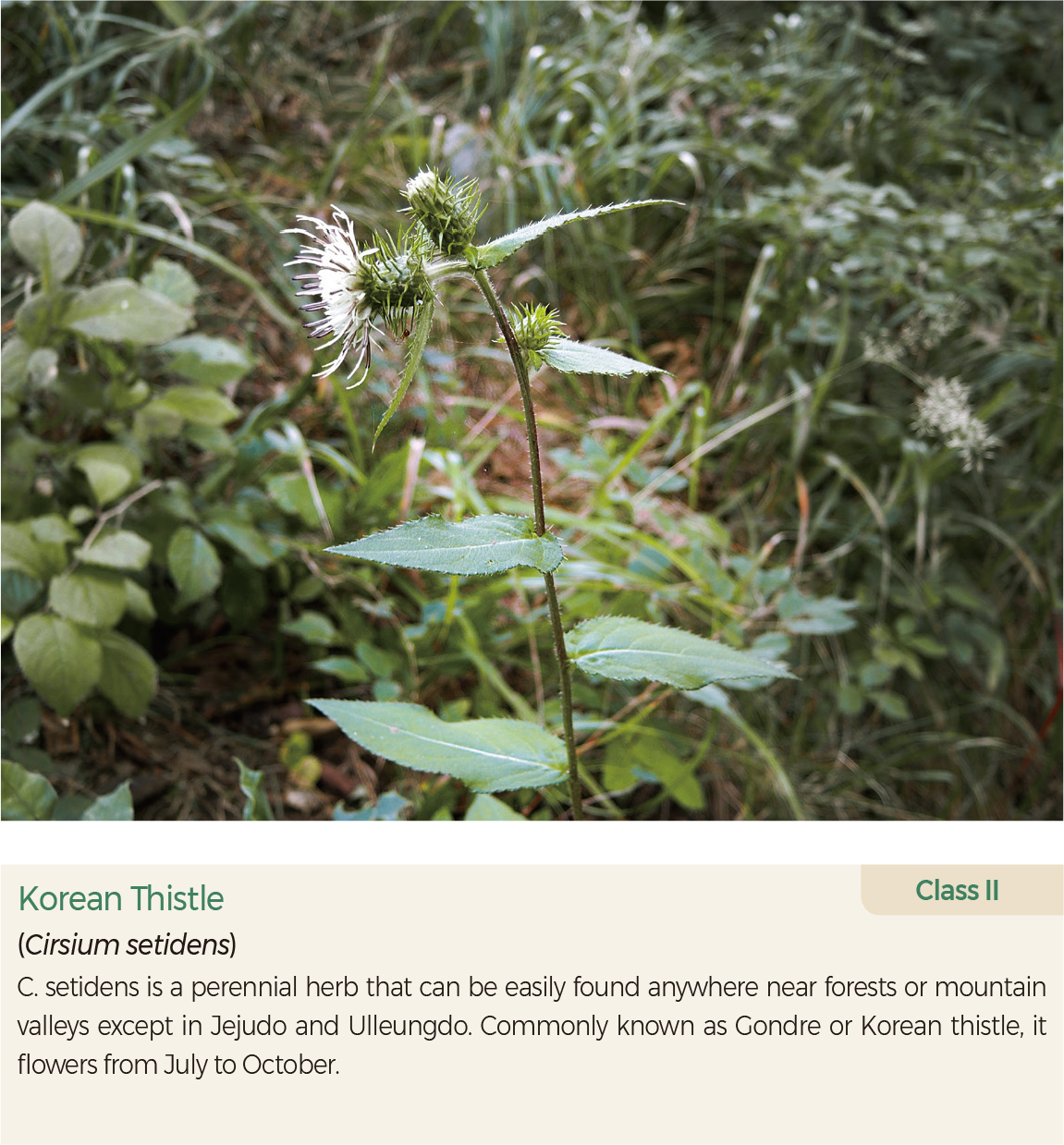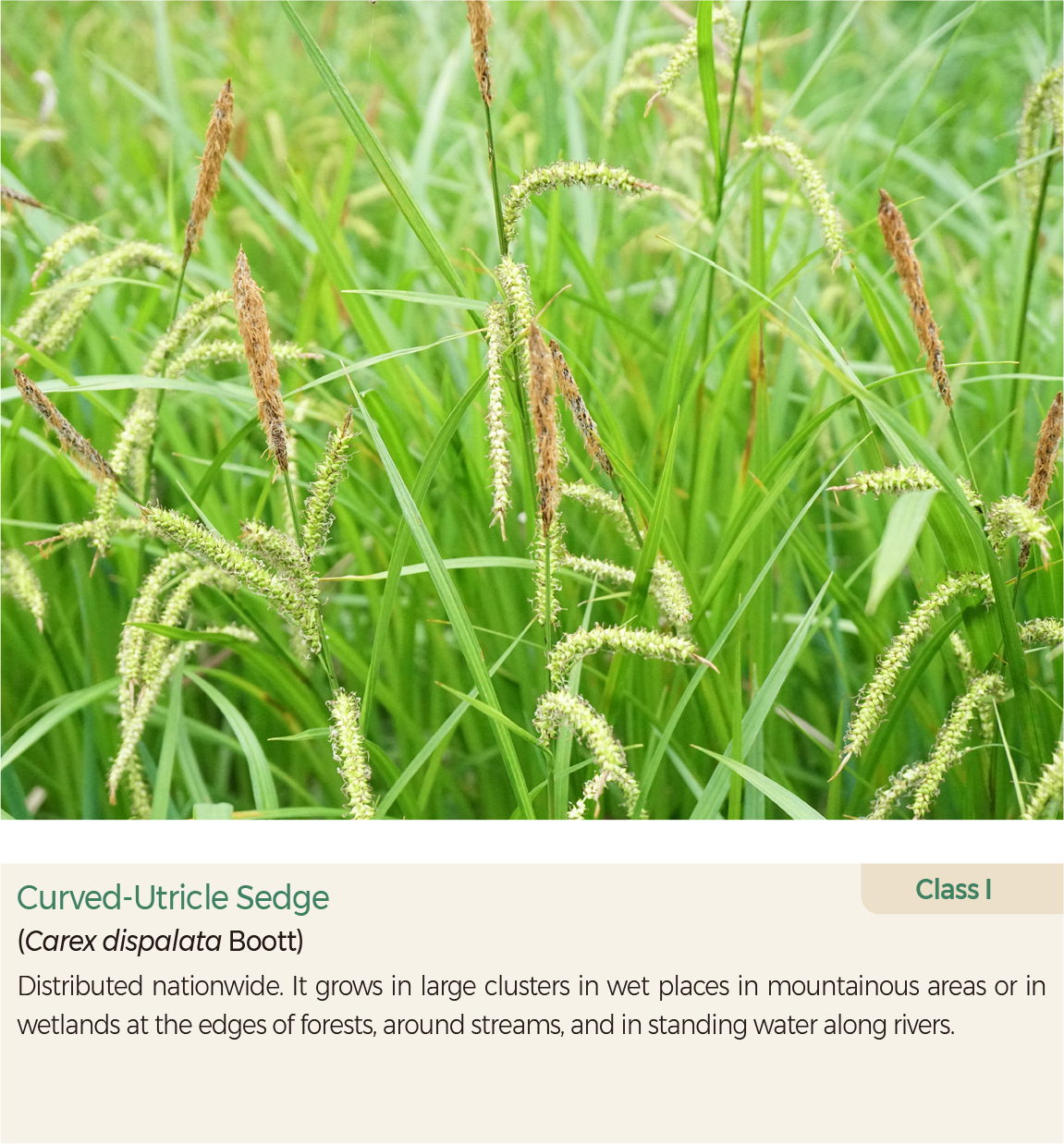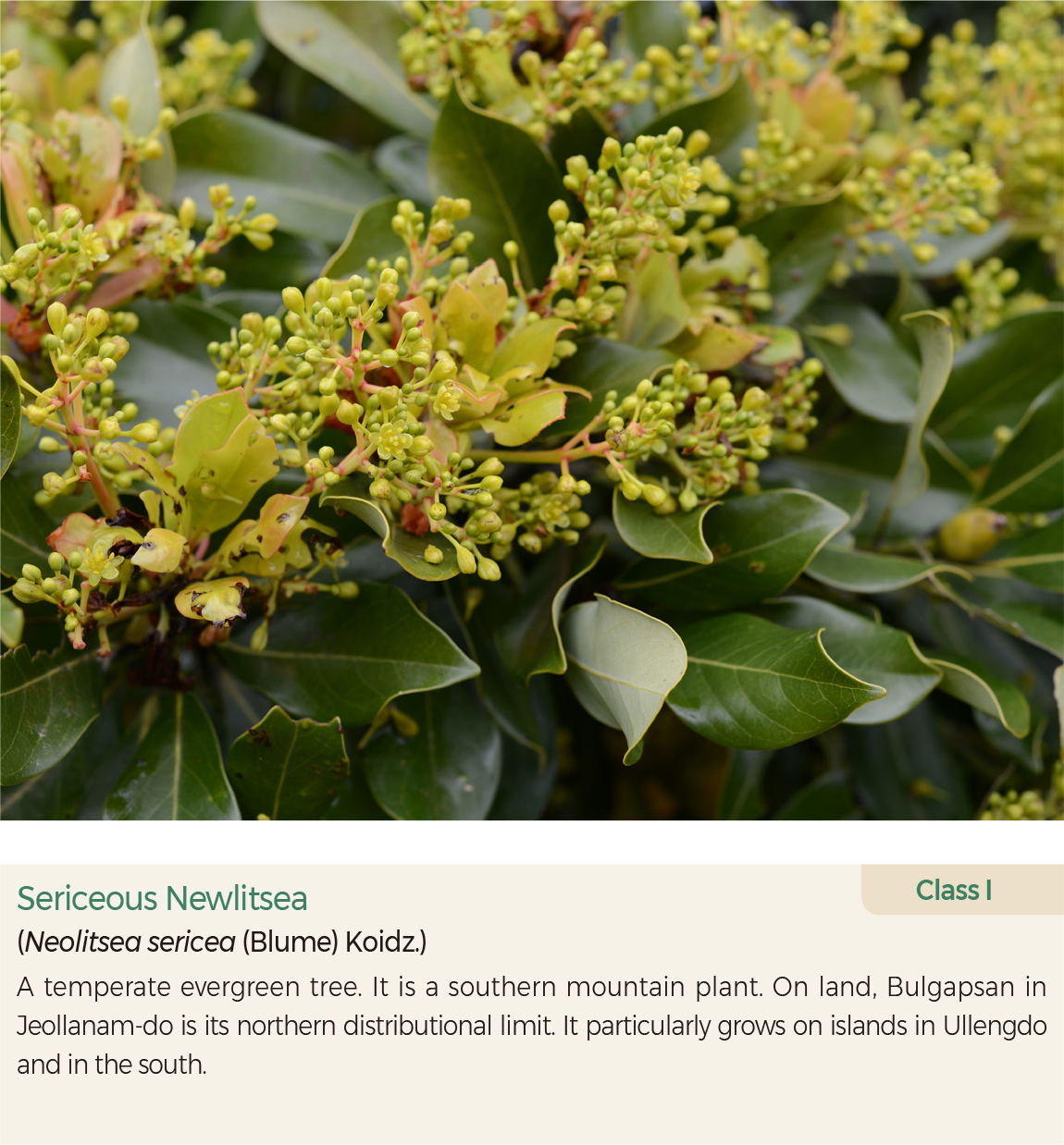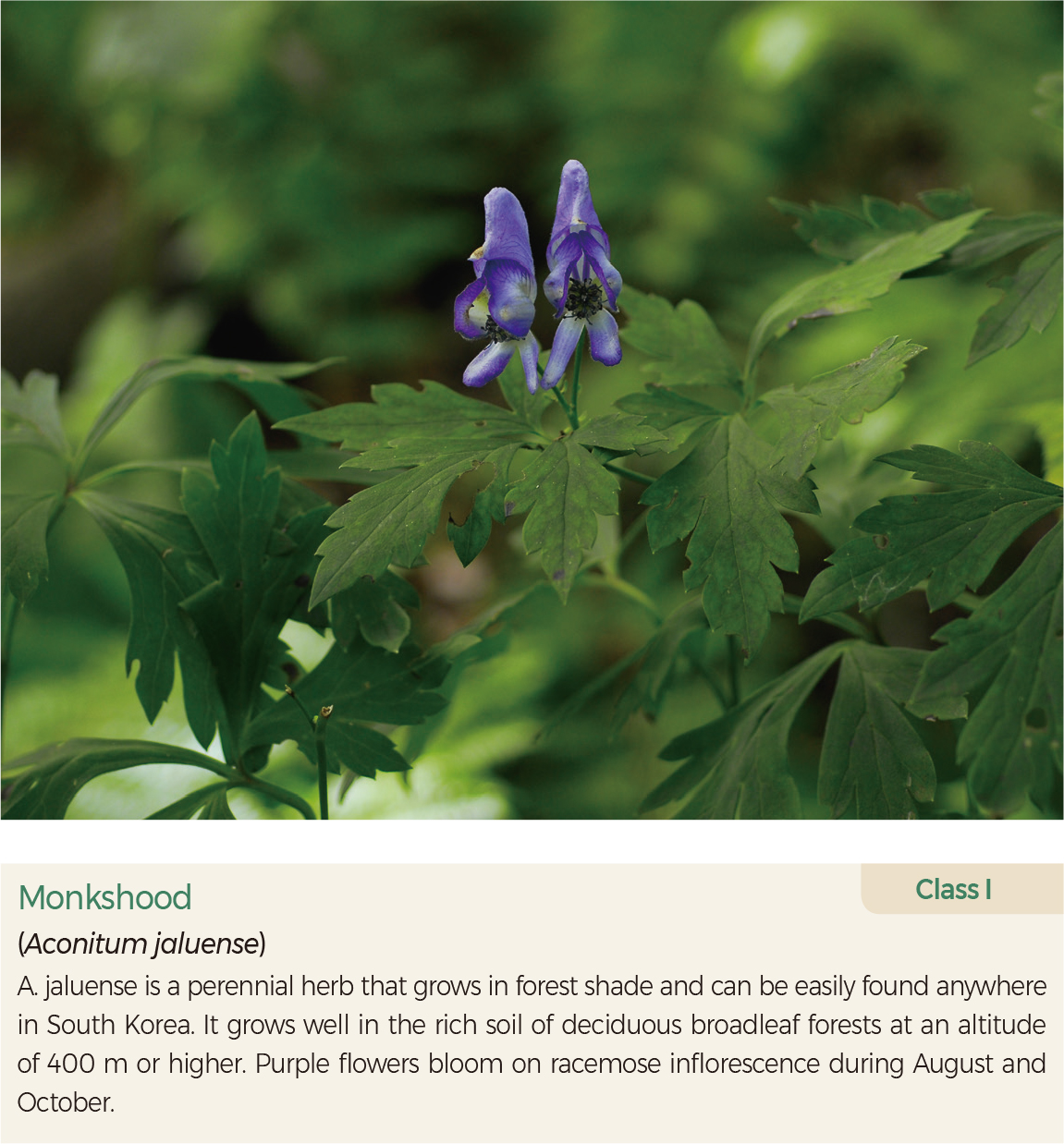English II 2020
Plant distribution is determined by numerous environmental factors such as topography and climate and the dispersal ability of each plant species. The phytogeographical categories defining a region are based upon the plant's original characteristics. Such regions of plant distribution are called floristics. The floristics of the Korean Peninsula differs among scholars. Some include the entire Korean Peninsula in the Korea-Japan southern floristics, while others include only the Korean Peninsula excluding Baekdusan in the Korean-Japanese southern floristics. Floristics of the Korean Peninsula are classified into eight subgroups. The eight subgroups include Gwanseo, Gapsan, and Gwanbuk in North Korea and Jejudo, Ulleungdo, southern coast, southern region, and central region in South Korea. Plant groups selected through floristics analysis are divided into five classes according to their range. The selected floristic regional indicator plants are a group of vascular plants selected for assessing the natural environment. Floristic regional indicator plants can be used to determine the conservation priorities of major domestic species. It is also possible to compare the natural environment between regions by analyzing the distribution of classified floristic regional indicator plants. The floristic regional indicator plants represent 1,476 taxonomic groups: 258 taxonomic groups in Class V, 440 taxonomic groups in Class IV, 371 taxonomic groups in Class III, 207 taxonomic groups in Class II, and 200 taxonomic groups in Class I.
Class V is a protected endangered wildlife taxon or a taxonomic group that is comparable to a protected species due to the taxonomic group’s small population resulting from extremely limited, discontinuous, or isolated habitat. Therefore, Class V are at risk for losing more than 5% of their Korean population or suffering severe damage equivalent to that by a single development or exploitation. Class V consists of 258 taxa, including the Pincushion Plant, Smoothlip Cymbidium, Akebian-fruit Orchid, Chinese Hawthorn, Whisk Fern, Bird's-nest Fern, Korean Lady's Slipper, Jeonju Pogostemon, Maehwamareum, Ulleungdo Cotoneaster, Seomhyunsam, Ulleungdo Turk's-cap Lily, and Yellow Surprise Lily.
Class IV is a taxonomic group that grows in one of four floristic subgroups. Class IV species have small numbers of populations due to sporadic distribution or have relatively large numbers of populations growing in groups. Class IV has a wider distribution than Class V or has somewhat larger species populations. Thus, it is somewhat less important than Class V. Class IV consists of 440 taxa, including Spike Rosebay, Geumgangchoronkkot, Camphor Tree, Asian Beach Jackbean, Chestnut-leaf Fern, Green Dragon, Arabidopsis, and Korean Forest Poppy.
Class III is a taxonomic group that grows in two of four floristic subgroups. Class III species have small numbers of populations due to sporadic distribution or have relatively large numbers of populations growing in groups. Class III populations are distributed in less than half of the area within the floristic subgroup. Class III consists of 371 taxa, including Short-fruit Rosebay, Manchurian Isopyrum, Skunk Cabbage, Stauntonia Vine, Kadsura Vine, Yellowish Velvety-leaf Litsea, Round-leaf Indian Hawthorn, Glossy-leaf Paper Plant, East Asian Pollia, and Winter Raspberry.
Class II is a taxonomic group of species that either grow in a unique environment or have populations that are distributed nationwide, but Class II species generally grow in mountainous areas of about 1,000 m or higher. Class II consists of 207 taxa, including Rigid-branch Yew, Yalu River Primrose, Marsh Marigold, Korean Swamppink, Asian Common Seepweed, East Asian Seepweed, Herbaceous Seepweed, Marshfire Glasswort, Staunton's Bugseed, Frogbit, Channelled Water Plantain, and Slender Cattail. Class I is a taxonomic group that grows in three of four floristic subgroups. Class I species have small numbers of populations due to sporadic distribution or have relatively large numbers of populations growing in groups. It is the most widely distributed of the five floristic subgroups in Korea, so it is the least important in evaluating the natural environment. Class I consists of 200 taxa, including Singlespike Chloranthus, Stalkless-flower Eleuthero, Oldham's Meliosma, Evergreen Spindletree, Japanese Mallotus, Sericeous Newlitsea, Starflower Gromwell, and Songak.
The Korean Peninsula is home to 4,576 taxa of plant species. Five South Korean floristic regions contain about 3,300 naturally growing taxa. About one thousand taxa, including East Asian Edelweiss, Manchurian Poplar, and Big-bract Hare's Ear are estimated to grow in the central region; 1,300 taxa, including Korean Stewartia, Korean Winter Hazel, Korean Forest Poppy, and Siberian Lily grow in the southern region; 2,000 taxa, including Camphor, Wild Dampalsu, Waxberry, and other southern plant species grow in the Jeju region; and 700 taxa, including Pointed-petal Trillium, False Lily of the valley, and Giant Knotweed grow in Ulleungdo. Also, around 3,000 taxa, including Dark-bark Spruce, Korean Viburnum, Korean Twisted-stalk, and Alpine Clubmoss, are found in Gwanbuk, Gapsan, and Gwanseo of North Korea. |
